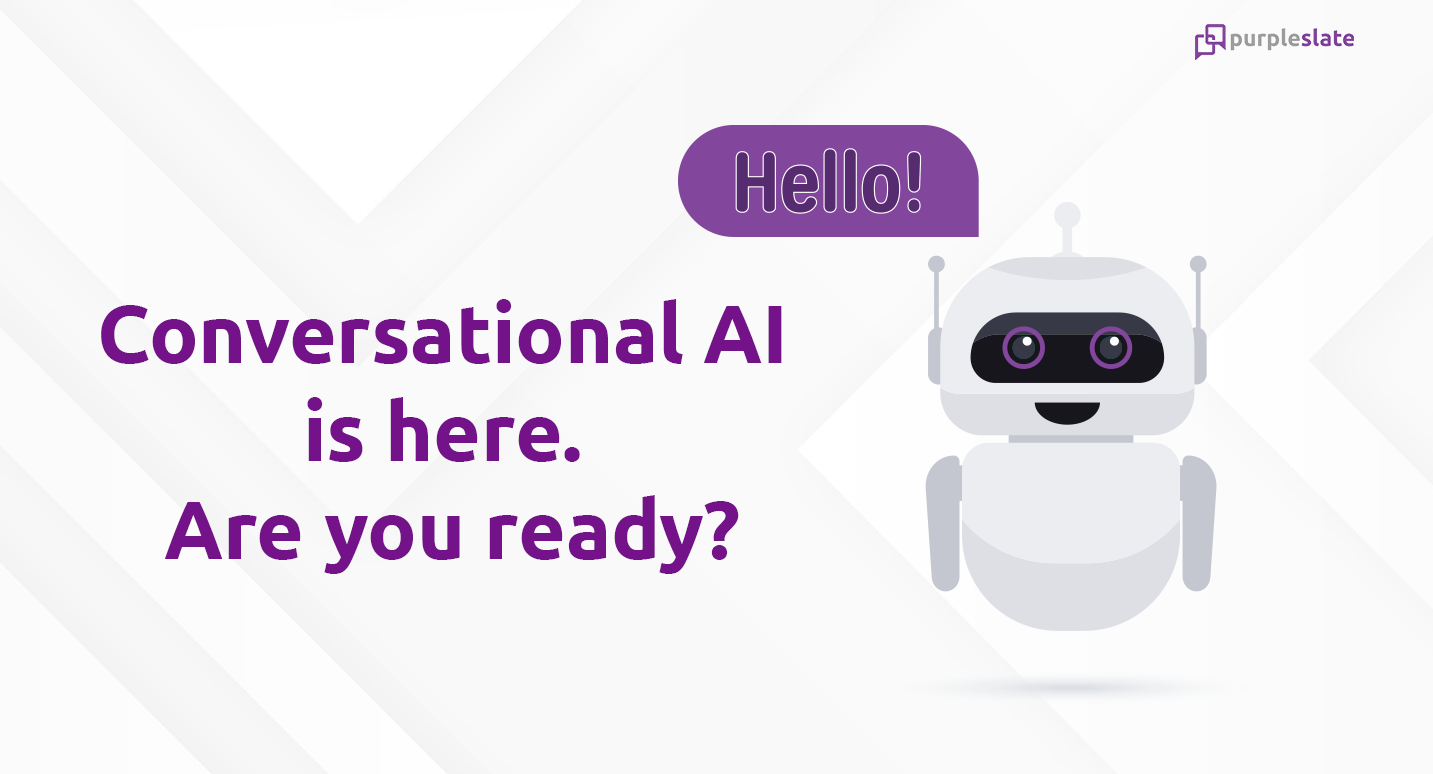
Introduction
“Hey, Google
Set a reminder to call mom”
“Hey, Siri
Send a message to my hairstylist to confirm today’s appointment”
“Hey, Alexa
Dim the lights and turn on the air conditioner”
Sound familiar?
All of us have used these voice assistants to make our lives simpler. We have all come a long way in evolving the way we interact with technology.
When computers were first invented, you could communicate with them only through coding languages. Then, came the graphic user interface where you could click on icons and symbols to get your message across to the machine. Software designers are constantly looking for ways to simplify human-machine conversations. Today, we have reached a stage where we can build a virtual assistant that comprehends instructions given in human languages and follow through.
The idea was first introduced in the 1990s when IBM introduced digital speech recognition technology in their personal computer. Much later, they also launched the first smartphone – IBM Simon in 1994 and that laid the foundation for smart assistants as we know them today. In 1994, the idea of smart assistants and digital speech recognition seemed ahead of its time and was not pursued enthusiastically by tech leaders. Later on, companies like Google, Microsoft, Amazon, Apple, etc. actively worked towards developing and improving virtual assistants and thus dawned the age of conversational AI and voice-enabled virtual assistants.
Today, we stand on the brink of the next technological revolution with new-age technologies like AI, big data, blockchain, and AR/VR taking the world by a storm. And conversational AI is the key technology that brings all these futuristic technologies together.
Conversational AI
One tech to rule them all
One tech to find them
One tech to bring them all, and bind them
In the Land of Technology, where automation lies.
What is Conversational AI?
Let’s be real, when you hear conversational AI, the first thing that comes to mind is chatbots. But, in reality, even if a conversational AI platform may or may not look like a chatbot, it is a lot more than a mere if-else flowchart program.
Conversational AI is more than a rule-based chatbot. It is “A programmatic and intelligent way of offering a conversational experience to mimic conversations with real people, through digital and telecommunication technologies” as defined by Deloitte.
Confused? To simplify it, Conversational AI enables bots to converse with us like humans across different channels like website chat window, social media chat spaces, and telephony to drive hyper contextual conversations. You can find a crude illustration of a Conversational AI system below.

All this sounds really appealing and interesting to read in a tech magazine. But what is the real use of Conversational AI? Is it a luxury or is that a latent need nobody has figured out yet?
Conversational AI Technology – Is it Really Useful or Just a Luxury?
Most of the popular Conversational AI apps like the Google Assistant, Siri, Alexa, Bixby, etc, are directed towards making your life easier, saving your time, and maybe helping you embrace your lazy side. You can switch off your lights without getting out of the bed, call a friend without having to tap multiple buttons on your phone, set a reminder, and check your schedule for the day while you are putting on your pants to reach the office on time and things like that.
But, that is not all a Conversational AI app can do. You can give instructions and ask questions in your language to a Conversational AI assistant and it will respond to you the same way. It can either be chat-based, voice-enabled or both. It is capable of collecting user data and processing it to offer valuable information. It can also incorporate elements of Augmented Reality and Virtual Reality in it and make your conversation more interactive and realistic. Additionally, it can understand contextual conversations, tone and intent of the user and respond accordingly.
However, the real potential of CAI lies in its business applications. Businesses can prosper rapidly if they start exploring the possibilities of CAI.
Conversational AI for Business
The conversational AI market for businesses is booming and is expected to be worth 18.4 billion dollars by 2026. In 2022, 46.9% of adults use a voice assistant and the number is rising rapidly. Today, 27% of customers would prefer buying items through a chatbot and 63% would prefer getting basic customer service queries resolved through a chatbot.
Businesses across the world are trying to ride this next wave of digital disruption with Conversational AI for customer engagement where instant but smart and hyper-personalized resolutions are the need of the hour.
Physical supermarket stores are exploring the idea of having holographic assistants to personalize your shopping experience. The banking sector will automate 90% of its customer care interactions using virtual assistants. Retail stores are moving to a mix of e-commerce plus brick & mortar model with BOPIS (Buy Online Pickup In Store) solution powered by Conversational AI enabled WhatsApp messages. Instead of WhatsApp, other channels like Alexa or intelligent telephony can also be used.
Conversational AI also helps industries with Smart Transcription where it can be trained to analyze and understand domain specific vocabulary, a great example being in the medical field where doctors need to log during diagnostics or surgery. Conversational AI is also equipped with guiding clients to complete certain set of actions. This is successfully used in the Insurance sector where customers are renewing their insurance or buying new insurance using Whatsapp, website chatbot, and more mediums.
These numbers and the use cases are evidence enough that businesses need to incorporate CAI into their next digital transformation plan. Conversational AI ensures businesses optimize their operating expenditures, improve productivity and more importantly, save tremendous amounts of time.
Conversational AI for Customer Service
Brand loyalty is rare today. Customers have so many brand alternatives to choose from that they end up choosing the product that is most conveniently available to them or the one that offers the best customer experience.
86% of the customers tend to choose a brand based on the customer experience while only 14% prioritize product quality over customer experience. Customers today expect instant responses and recommendations right at their fingertips while they are shopping, be it online or offline.
Your business no longer can afford to be a passive responder. You need to proactively offer your products and services exactly when your customers need them most.
If you are able to identify your customers’ needs, understand their concerns, and give them instant solutions, you gain an edge over your competitors. Conversational AI apps can help you build a connection with your customers and understand their needs and offer personalized recommendations.
Conversational AI solutions also offer multi-channel support. So, with a Conversational AI app, you can reach your customers on the channels they prefer to be on. This will make your brand more accessible and appealing to your customers.
You can also enable multi-language support through a Conversational AI solution and converse with your customers in the language they are most comfortable with.
Above all, your Conversational AI app will be available and online 24/7. Customers no longer will have to wait for your customer care personnel to come online and resolve their concerns and queries.
Above all, your Conversational AI app will collect customer data and process it to give you detailed business insights to help you optimize your business to best serve your customers.
Conversational AI – Bringing about the next big revolution
It is undeniable that conversational AI is going to be the next big thing in technology for businesses. Soon, it will no longer be a tool for luxury but a necessity. The major components in a CAI system are Machine Learning (ML) and Natural Language Processing (NLP). If we have to break NLP down further, there will be Natural Language Understanding (NLU) and Natural Language Generation (NLG). The NLP processes work in tandem with ML processes to improve the AI algorithm via constant and consistent feedbacks. On top of this, organizations can decide on the different channels based on business requirements. To enable true omnichannel presence, speech-to-text transcription, voice recognition, and other technologies are embedded.
Customers will start relying more on conversational AI and expect to have meaningful conversations with the brand through virtual assistants. You do not want your business to be late in catching up with this technology wave.




